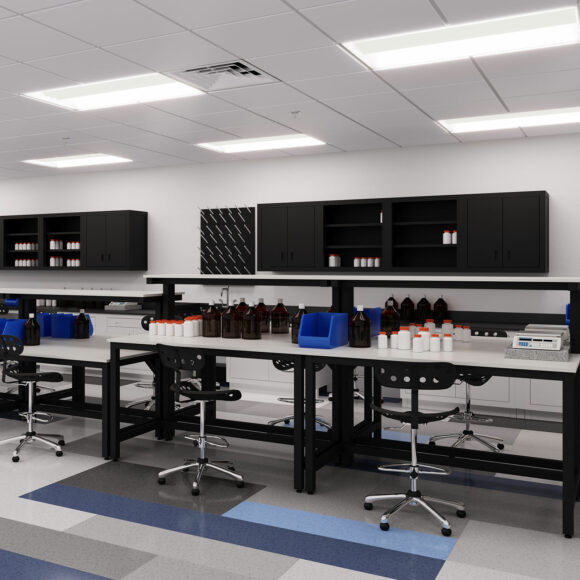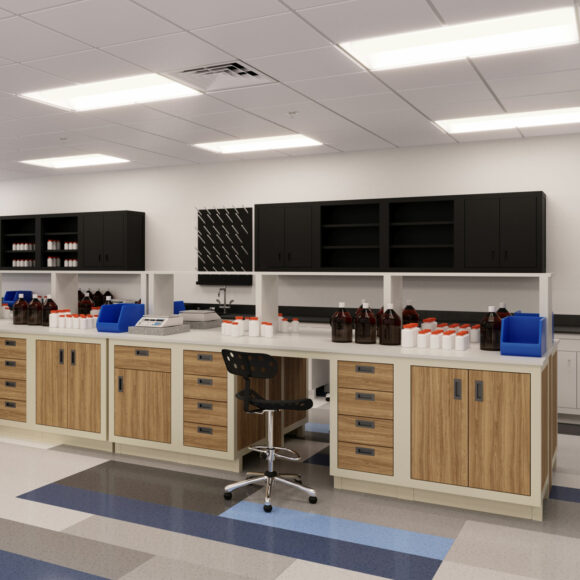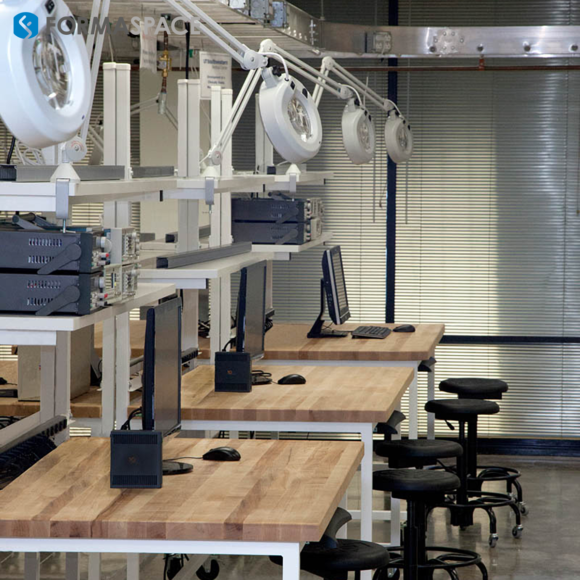A video of a paralyzed man stepping up out of a wheelchair to take steps on his own has given members and friends of the disabled community hope.
In this Formaspace executive report, we’ll investigate the need for new therapies to help those suffering from paralysis to live better, more independent lives.
The Number of Americans Suffering from a Paralysis Diagnosis May Be Higher than You Think

The US disabled community is estimated to be around 42 million people, about 13% of the population. Among this group, disability due to some form of paralysis affects about 5.4 million people, representing around 1.6% of the population.
The community of those affected by paralysis can be categorized further:
Some paralytics may have conditions (such as congenital paraplegia) that affect their nervous system during fetal development. Others may have diseases or injuries detected at birth or diagnosed during infancy that affect muscle control, such as spina bifida or cerebral palsy.
At the other end of the demographic spectrum are diseases that typically onset later in life, such as a stroke, multiple sclerosis, or Parkinson’s, all of which can result in varying degrees of paralysis.
Accidents that injure the brain or the spinal cord are the third main category of paralysis causation. Accidental falls (such as from high ladders and roofs or during sporting events, including skiing or horseback riding), vehicular accidents, gunshot or knife wounds, or nerve damage incurred during surgical procedures (such as back surgery) can all lead to varying degrees of paralysis.
According to a 2013 study, stroke is the most common cause of paralysis (37%), followed by spinal cord injuries (27%), multiple sclerosis (18%), and cerebral palsy (8%).

Understanding the Differing Classifications of Paralysis and Related Medical Conditions
The nervous system, controlled by the brain, sends signals down the spinal cord to different muscle groups. Depending on how a disease or injury manifests itself, there can be different outcomes:
- Monoplegia affects one limb only.
- Diplegia affects the body symmetrically (for example, both arms or both sides of the face)
- Hemiplegia, typically caused by a stroke, affects one side of the body.
- Paraplegia affects from the waist down, typically affecting both legs and possibly bowel/bladder control and sexual function.
- Quadriplegia affects all four limbs. (Tetraplegia additionally affects the neck.)
- Locked-in syndrome, a rare condition, affects all movement except the eyes.
In addition to the conditions listed above, paralysis can lead to significant complications, including muscular atrophy, breathing problems, bedsores, blood clots (including deep vein thrombosis or DVT), persistent high or low blood pressure, and problems with speech or swallowing.

Grégoire Courtine, Champion of Paralytics Research
The French researcher Grégoire Courtine has emerged as a leading figure in the fight to understand the underlying causes and reverse the symptoms of paralysis.
Educated in a joint PhD program at the University of Pavia and the University of Burgundy, Courtine (who is often addressed as “G”) performed his postdoc work at UCLA before moving to the University of Zurich in 2008 to study paraplegic rats.
In 2012, Courtine took a position with the École Polytechnique Fédérale de Lausanne (EPFL), eventually establishing his own research laboratory, known as the G-LAB.
In this 2022 interview, Grégoire Courtine discusses the horseback riding accident by Chris Reeves (the actor in the Superman movie who was paralyzed in a horse riding accident) and how it inspired his life’s work researching therapies for paralyzed patients.
In 2019, Courtine and his research student Léonie Asboth published a major paper on their experiments with paralyzed rats that theorized the brain could be reprogrammed to use alternate pathways, essentially allowing signals to bypass severed nerve connections to reach paralyzed muscle groups.
Courtine co-founded a commercial biotech venture, ONWARD Medical, in 2014, whose mission is to bring the neurostimulation therapies developed at G-LAB to market. (You can read the ONWARD pitch deck here.)
The neurosurgeon Jocelyne Bloch, who joined EPFL as an adjunct professor in 2019, joined Courtine in a joint co-director leadership role at the .NeuroRestore Laboratory – a cooperative initiative run by the Defitech Foundation, the Lausanne University Hospital, the University of Lausanne and the EPFL.
The .NeuroRestore Laboratory conducts (and evaluates) surgical implantations of medical devices for brain and muscle stimulation therapy in volunteer patients.

The Latest Paralytic Therapeutic Research from G-LAB, .NeuroRestore and ONWARD
In the last few years, Courtine and other research partners have published a series of papers outlining their evolving approach to helping paralytic patients restore some degree of muscle control through the implantation of two stimulator medical devices, one located in the brain and one in the affected muscle group:
“Spinal Cord Repair: Advances in Biology and Technology.” Nature Medicine 25, no. 6 (June 2019): 898–908. https://doi.org/10.1038/s41591-019-0475-6.
“The Neurons That Restore Walking after Paralysis.” Nature 611, no. 7936 (November 2022): 540–47. https://doi.org/10.1038/s41586-022-05385-7.
“Activity-Dependent Spinal Cord Neuromodulation Rapidly Restores Trunk and Leg Motor Functions after Complete Paralysis.” Nature Medicine 28, no. 2 (February 2022): 260–71. https://doi.org/10.1038/s41591-021-01663-5.
“Low-Intensity Focused Ultrasound Neuromodulation for Stroke Recovery: A Novel Deep Brain Stimulation Approach for Neurorehabilitation?” IEEE Open Journal of Engineering in Medicine and Biology 4 (2023): 300–318. https://doi.org/10.1109/OJEMB.2023.3263690.
“A Spinal Cord Neuroprosthesis for Locomotor Deficits Due to Parkinson’s Disease.” Nature Medicine 29, no. 11 (November 2023): 2854–65. https://doi.org/10.1038/s41591-023-02584-1.
“Walking Naturally after Spinal Cord Injury Using a Brain–Spine Interface.” Nature 618, no. 7963 (2023): 126–33. https://doi.org/10.1038/s41586-023-06094-5.
“Non-Invasive Spinal Cord Electrical Stimulation for Arm and Hand Function in Chronic Tetraplegia: A Safety and Efficacy Trial.” Nature Medicine 30, no. 5 (May 2024): 1276–83. https://doi.org/10.1038/s41591-024-02940-9.
The paper “Walking Naturally after Spinal Cord Injury Using a Brain–Spine Interface” from May 2024 (shown above) documents the most recent developments in implanting an epidural electrical stimulation (EES) device on the surface of the brain and a secondary implant in a patient’s spine.
The patient, Michel Roccati, suffered from a complete spinal cord lesion which severed the nerve signals to his legs. He had the EES devices implanted in 2021.
Using a wireless external communication device, patient Roccati was able to initiate stimulation of his brain to command his feet to walk.
Using an external control device, Roccati can “command” his brain to send impulses to “walk,” which are received by the EES brain implant. These signals are received by the external control device and rebroadcast (e.g. “bridged”) wirelessly to the second device implanted below the patient’s spinal cord lesion. When the circuit completes, Roccati, a paraplegic with paralysis in both legs, can command his legs to lift him unassisted out of his wheelchair and to walk a few steps under his own power.

A Hopeful Outlook for the Future
In an interview with Scott Chesney (see video above) Courtine expressed optimism that there could be future therapies that could address some of the other conditions affecting paraplegics, such as loss of bladder/bowel and male sexual function. These latter conditions require manipulation of blood flow, known as hemodynamic management.
Courtine advises patients, these therapies won’t come tomorrow but they are coming soon. He also counseled prospective paraplegic patients to maintain muscle strength to the extent they can because extensive muscle atrophy will make the therapy more difficult.
In a video interview sponsored by Rolex (which helps fund Courtine and Bloch’s work), Courtine and Bloch expressed optimism that this type of EES neurotherapy could also help those suffering balance and gait problems when walking, such as Parkinson’s patients.
What’s next on the horizon?
Ideally, we’d like to see regeneration of severed or damaged nerve pathways to restore natural muscle control to paralytic patients with the need for implanting medical devices.
Researchers from UCLA and Harvard are working with the EPFL laboratory in Geneva, Switzerland, to regenerate damaged nerve fibers in the spinal cord, offering hope for paralytic patients to regain control over their muscles.
Fortunately, new research by Courtine and his associates is making significant progress in regenerating damaged nerve fibers using new gene therapy techniques.
“Recovery of Walking after Paralysis by Regenerating Characterized Neurons to Their Natural Target Region.” Science 381, no. 6664 (September 22, 2023): 1338–45. https://doi.org/10.1126/science.adi6412.
Courtine believes that in the short term, these new nerve regeneration techniques will work in tandem with external electrical stimulation devices, such an EES, to retore motor control to paralyzed patients.
We congratulate the researchers on these amazing achievements and eagerly await the next developments in their research efforts.

Formaspace is Your Laboratory Research Partner
Evolving Workspaces. It’s in our DNA.
Talk to your Formaspace Sales Representative or Strategic Dealer Partner today to learn more about how we can work together to make your next construction project or remodel a success.










